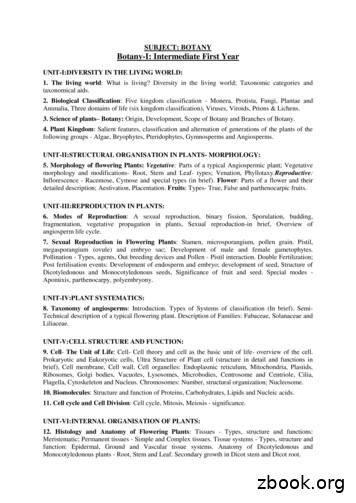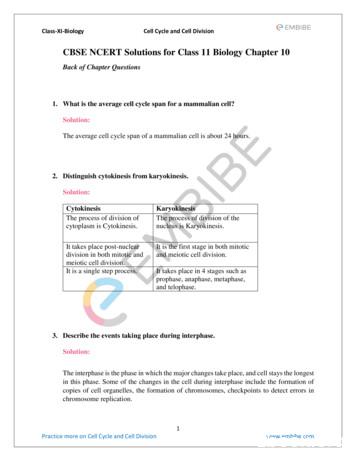Figure 1-2 Essential Cell Biology ( Garland Science 2010)
1Figure 1-2 Essential Cell Biology ( Garland Science 2010)
2
3Figure 5-2 Essential Cell Biology ( Garland Science 2010)
4Figure 5-6 Essential Cell Biology ( Garland Science 2010)
5Figure 5-7 Essential Cell Biology ( Garland Science 2010)
6Figure 5-9 Essential Cell Biology ( Garland Science 2010)
7Figure 5-11 Essential Cell Biology ( Garland Science 2010)
8Figure 5-13 Essential Cell Biology ( Garland Science 2010)
9Figure 5-16 Essential Cell Biology ( Garland Science 2010)
10Figure 5-20 Essential Cell Biology ( Garland Science 2010)
11Figure 5-21 Essential Cell Biology ( Garland Science 2010)
12Figure 5-23 Essential Cell Biology ( Garland Science 2010)
13Figure 5-25 Essential Cell Biology ( Garland Science 2010)
14Figure 5-27 Essential Cell Biology ( Garland Science 2010)
15Figure 6-2 Essential Cell Biology ( Garland Science 2010)
16Figure 6-3 Essential Cell Biology ( Garland Science 2010)
17Figure 6-6 Essential Cell Biology ( Garland Science 2010)
18Figure 6-5 Essential Cell Biology ( Garland Science 2010)
19Figure 6-9 Essential Cell Biology ( Garland Science 2010)
20Figure 6-10 Essential Cell Biology ( Garland Science 2010)
21Figure 6-17a Essential Cell Biology ( Garland Science 2010)
22Figure 6-17b Essential Cell Biology ( Garland Science 2010)
23Figure 6-16 Essential Cell Biology ( Garland Science 2010)
24
25
26Figure 6-19 Essential Cell Biology ( Garland Science 2010)
27Figure 6-20 Essential Cell Biology ( Garland Science 2010)
28Figure 6-13 Essential Cell Biology ( Garland Science 2010)
29Figure 6-15 Essential Cell Biology ( Garland Science 2010)
30Figure 6-22 Essential Cell Biology ( Garland Science 2010)
31Figure 6-23 Essential Cell Biology ( Garland Science 2010)
32Figure 6-24 Essential Cell Biology ( Garland Science 2010)
33Figure 6-26 Essential Cell Biology ( Garland Science 2010)
34Figure 6-27 Essential Cell Biology ( Garland Science 2010)
35Figure 6-29 Essential Cell Biology ( Garland Science 2010)
36Figure 6-31 Essential Cell Biology ( Garland Science 2010)
37Figure 7-1 Essential Cell Biology ( Garland Science 2010)
38Figure 7-2 Essential Cell Biology ( Garland Science 2010)
39Figure 7-3 Essential Cell Biology ( Garland Science 2010)
40Figure 7-5 Essential Cell Biology ( Garland Science 2010)
41Table 7-1 Essential Cell Biology ( Garland Science 2010)
42Figure 7-7 Essential Cell Biology ( Garland Science 2010)
43Figure 7-8 Essential Cell Biology ( Garland Science 2010)
44Figure 7-9 Essential Cell Biology ( Garland Science 2010)
45Figure 7-10 Essential Cell Biology ( Garland Science 2010)
46Figure 7-12 (part 1 of 2) Essential Cell Biology ( Garland Science 2010)
47Figure 7-12 (part 2 of 2) Essential Cell Biology ( Garland Science 2010)
48
49Figure 7-16a Essential Cell Biology ( Garland Science 2010)
50Figure 7-15 Essential Cell Biology ( Garland Science 2010)
51Figure 7-17 Essential Cell Biology ( Garland Science 2010)
52Figure 7-18 Essential Cell Biology ( Garland Science 2010)
53Figure 7-20 Essential Cell Biology ( Garland Science 2010)
54Figure 7-21 Essential Cell Biology ( Garland Science 2010)
55Figure 7-22 Essential Cell Biology ( Garland Science 2010)
56Figure 7-23 Essential Cell Biology ( Garland Science 2010)
57Figure 7-24 Essential Cell Biology ( Garland Science 2010)
58Figure 7-25 Essential Cell Biology ( Garland Science 2010)
59Figure 7-28 Essential Cell Biology ( Garland Science 2010)
60Figure 7-29 Essential Cell Biology ( Garland Science 2010)
61
62Figure 7-30 Essential Cell Biology ( Garland Science 2010)
63Figure 7-31 Essential Cell Biology ( Garland Science 2010)
64
65Figure 7-33 (part 1 of 5) Essential Cell Biology ( Garland Science 2010)
66Figure 7-35 Essential Cell Biology ( Garland Science 2010)
67Figure 7-37 Essential Cell Biology ( Garland Science 2010)
68
69
70Figure 7-38 Essential Cell Biology ( Garland Science 2010)
71Figure 7-39 Essential Cell Biology ( Garland Science 2010)
72Figure 7-40 Essential Cell Biology ( Garland Science 2010)
73Figure 7-43 Essential Cell Biology ( Garland Science 2010)
74Figure 7-44 Essential Cell Biology ( Garland Science 2010)
75Figure 7-46 Essential Cell Biology ( Garland Science 2010)
76Figure 10-4 Essential Cell Biology ( Garland Science 2010)
77Figure 10-7 Essential Cell Biology ( Garland Science 2010)
78Figure 10-8 Essential Cell Biology ( Garland Science 2010)
79Figure 10-9 Essential Cell Biology ( Garland Science 2010)
80Figure 10-16 Essential Cell Biology ( Garland Science 2010)
81Figure 10-20 Essential Cell Biology ( Garland Science 2010)
82Figure 10-21 Essential Cell Biology ( Garland Science 2010)
83Figure 10-22 Essential Cell Biology ( Garland Science 2010)
84Figure 10-24 Essential Cell Biology ( Garland Science 2010)
85
86
87
Figure 6-17a Essential Cell Biology ( Garland Science 2010) 21. Figure 6-17b Essential Cell Biology ( Garland Science 2010) 22. Figure 6-16 Essential Cell Biology ( Garland Science 2010) 23. 24. 25. Figure 6-19 Essential Cell Biology ( Garland Science 2010) 26.
of the cell and eventually divides into two daughter cells is termed cell cycle. Cell cycle includes three processes cell division, DNA replication and cell growth in coordinated way. Duration of cell cycle can vary from organism to organism and also from cell type to cell type. (e.g., in Yeast cell cycle is of 90 minutes, in human 24 hrs.)
UNIT-V:CELL STRUCTURE AND FUNCTION: 9. Cell- The Unit of Life: Cell- Cell theory and cell as the basic unit of life- overview of the cell. Prokaryotic and Eukoryotic cells, Ultra Structure of Plant cell (structure in detail and functions in brief), Cell membrane, Cell wall, Cell organelles: Endoplasmic reticulum, Mitochondria, Plastids,
The Cell Cycle The cell cycle is the series of events in the growth and division of a cell. In the prokaryotic cell cycle, the cell grows, duplicates its DNA, and divides by pinching in the cell membrane. The eukaryotic cell cycle has four stages (the first three of which are referred to as interphase): In the G 1 phase, the cell grows.
Many scientists contributed to the cell theory. The cell theory grew out of the work of many scientists and improvements in the . CELL STRUCTURE AND FUNCTION CHART PLANT CELL ANIMAL CELL . 1. Cell Wall . Quiz of the cell Know all organelles found in a prokaryotic cell
Stent Type Stent Design Free Cell Area (mm2) Wallstent Closed cell 1.08 Xact Closed cell 2.74 Neuroguard Closed cell 3.5 Nexstent Closed cell 4.7 Precise Open cell 5.89 Protégé Open cell 20.71 Acculink Open cell 11.48 Stent Free Cell Area Neuroguard IEP Carotid Stent
Stent Type Stent Design Free Cell Area (mm2) Wallstent Closed cell 1.08 Xact Closed cell 2.74 Neuroguard Closed cell 3.5 Nexstent Closed cell 4.7 Precise Open cell 5.89 Protégé Open cell 20.71 Acculink Open cell 11.48 Neuroguard IEP Carotid Stent Stent Free Cell Area
Class-XI-Biology Cell Cycle and Cell Division 1 Practice more on Cell Cycle and Cell Division www.embibe.com CBSE NCERT Solutions for Class 11 Biology Chapter 10 Back of Chapter Questions 1. What is the average cell cycle span for a mammalian cell? Solution: The average cell cycle span o
The Health and Care sector employs approximately 110,000 people in the area, with Liverpool being home to more specialist hospitals and health centres than any other UK city outside of London. As the demand on the NHS grows in years to come, more vacancies will need to be filled. With hundreds of health and medical companies based here, the area is considered to be one of the UK’s top three .























